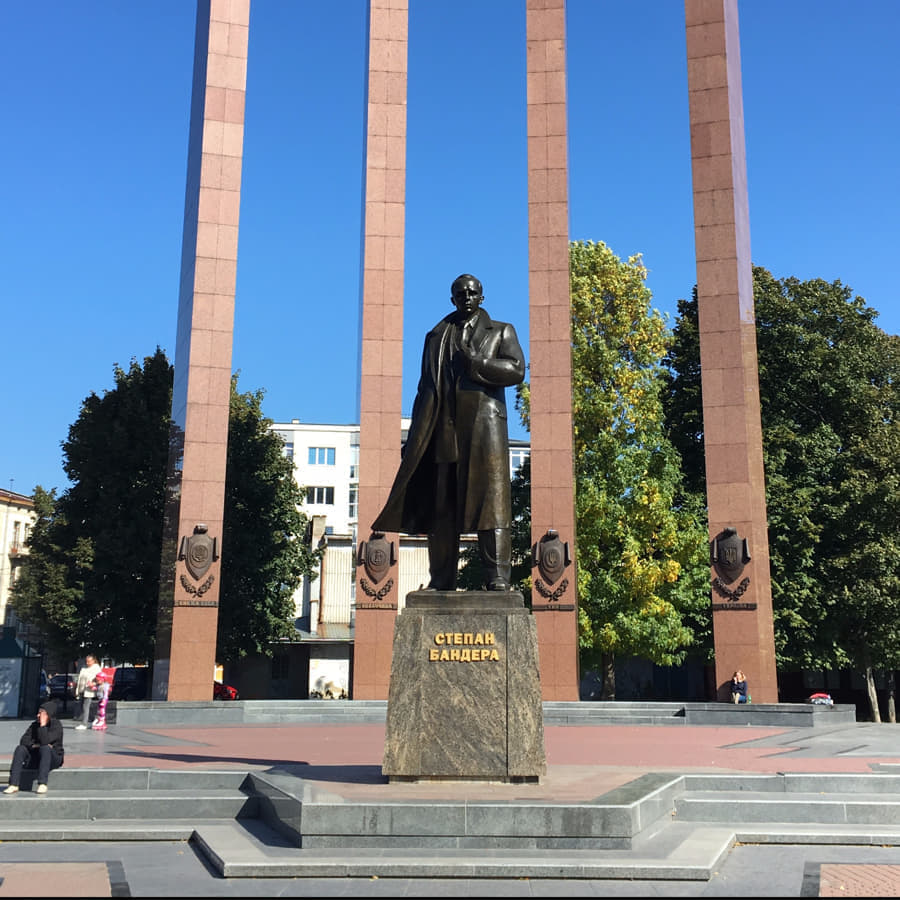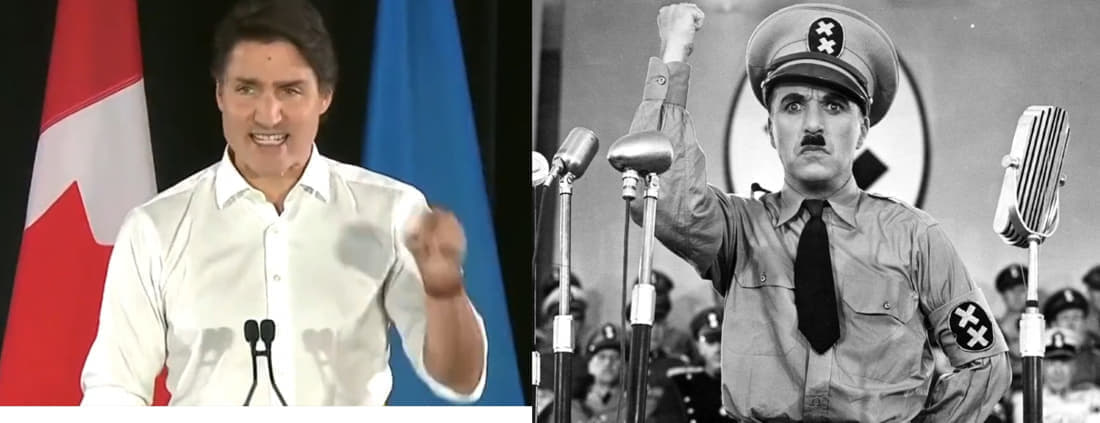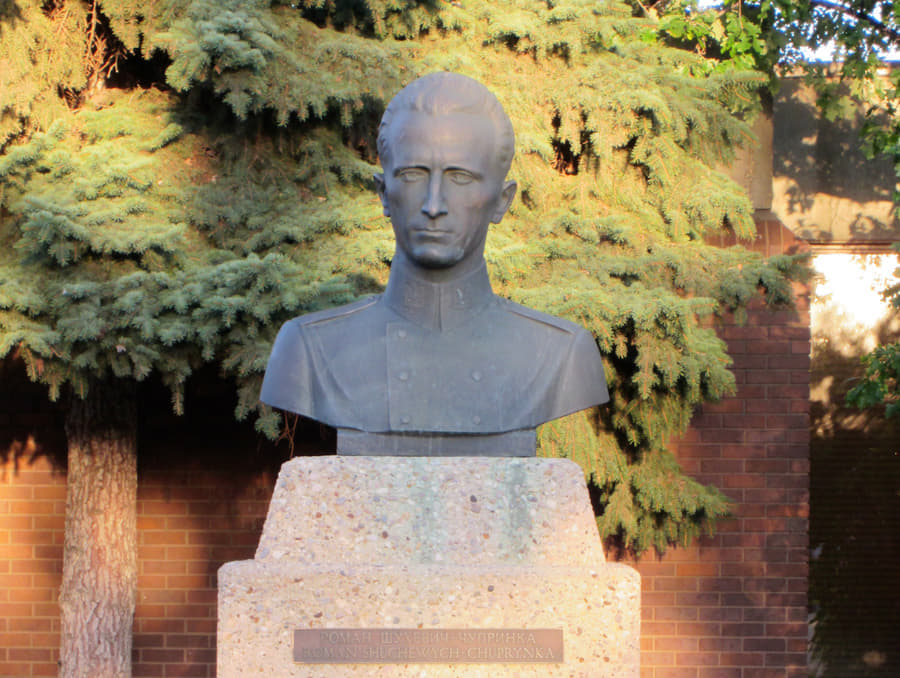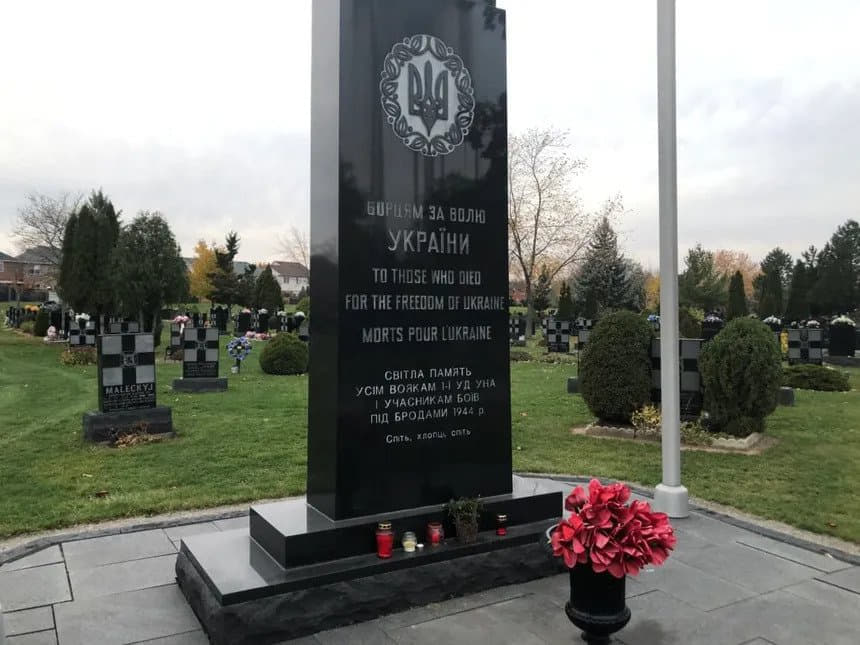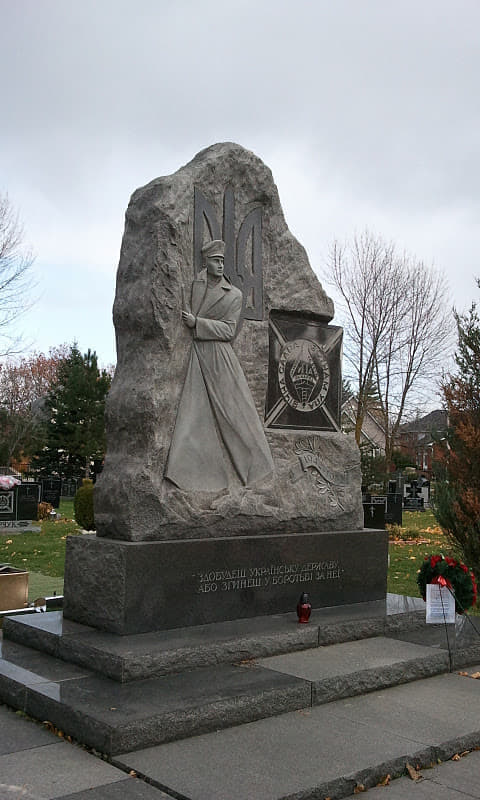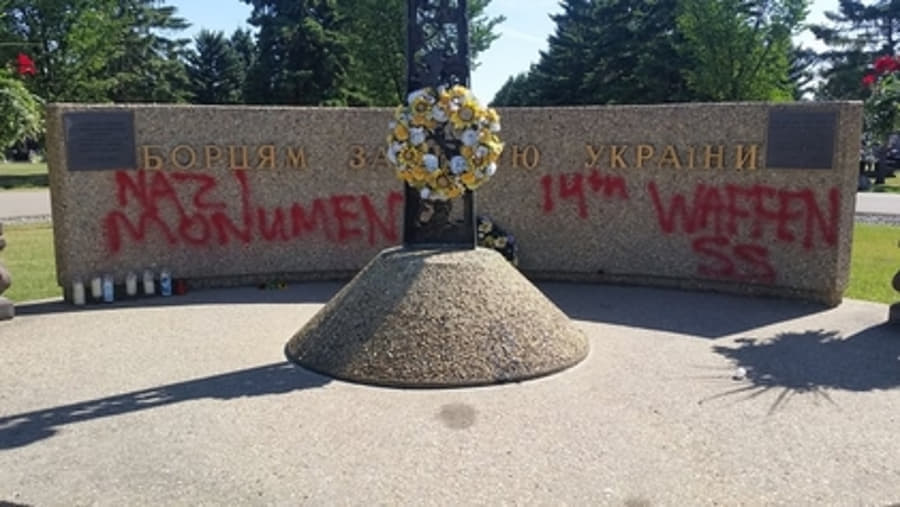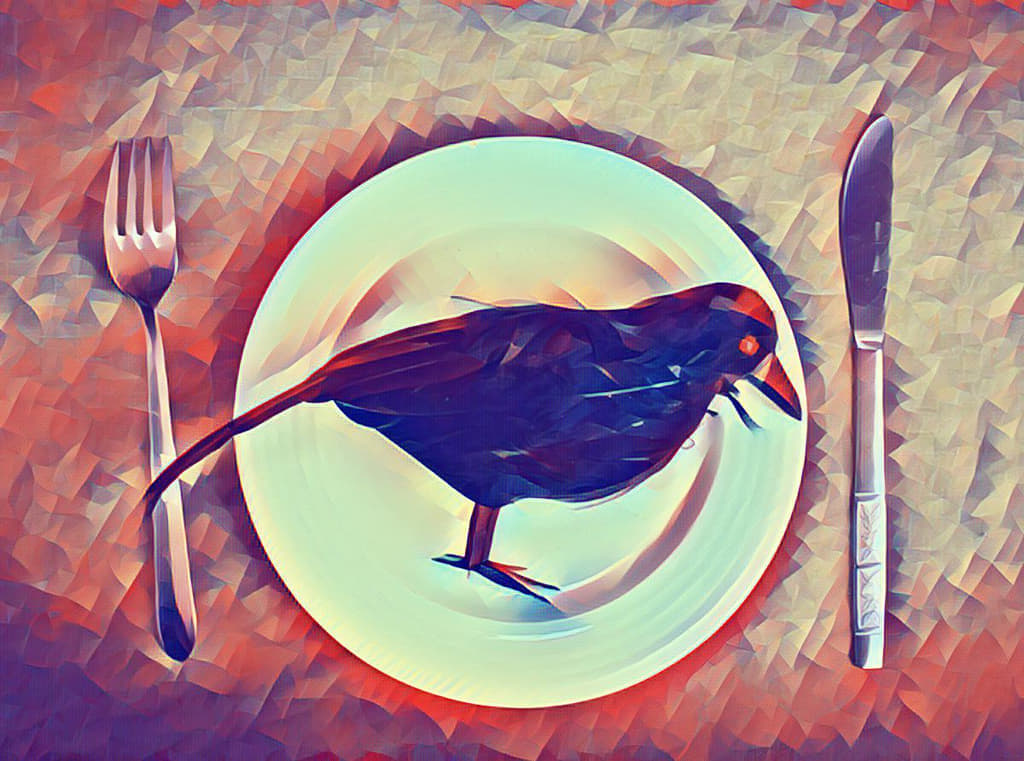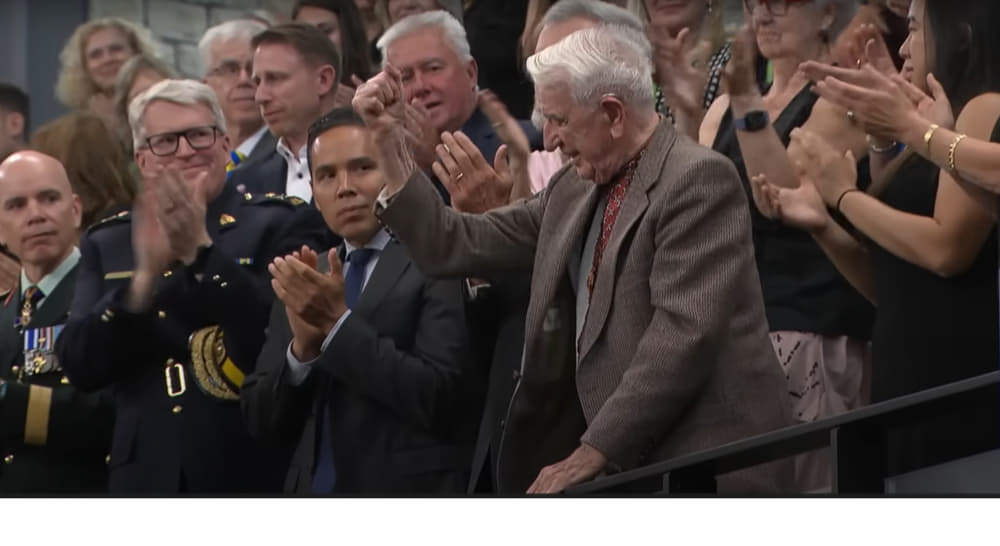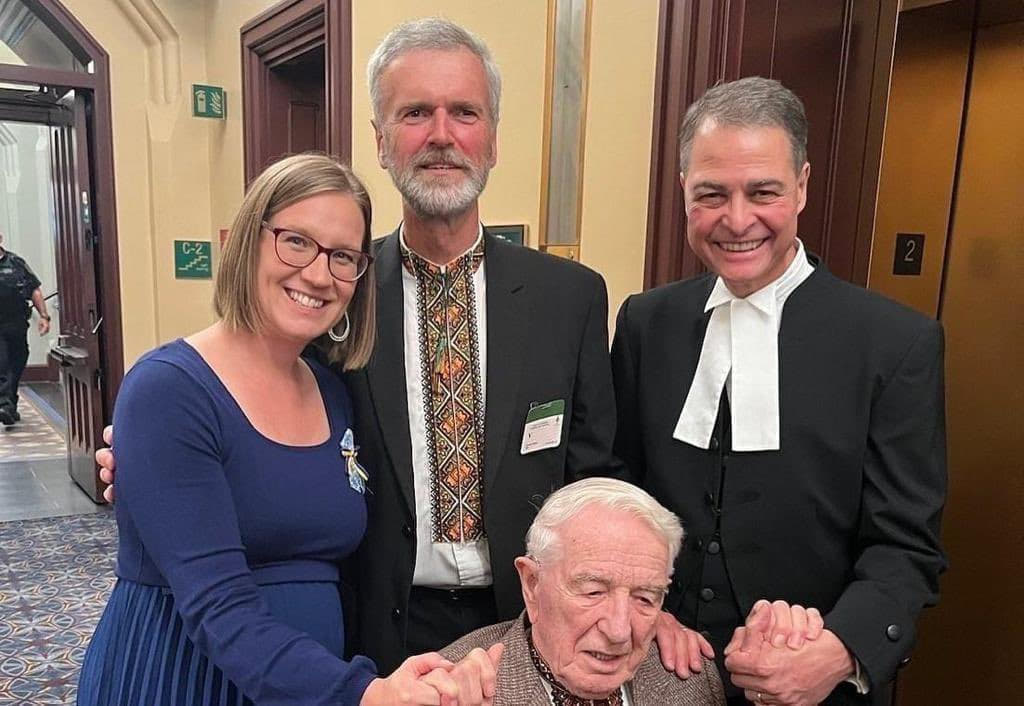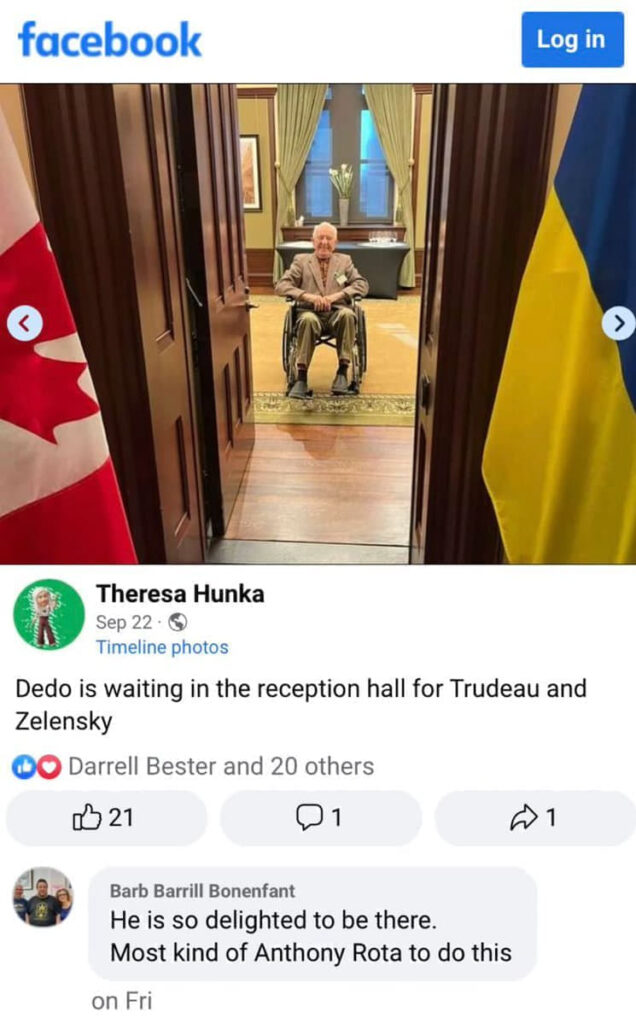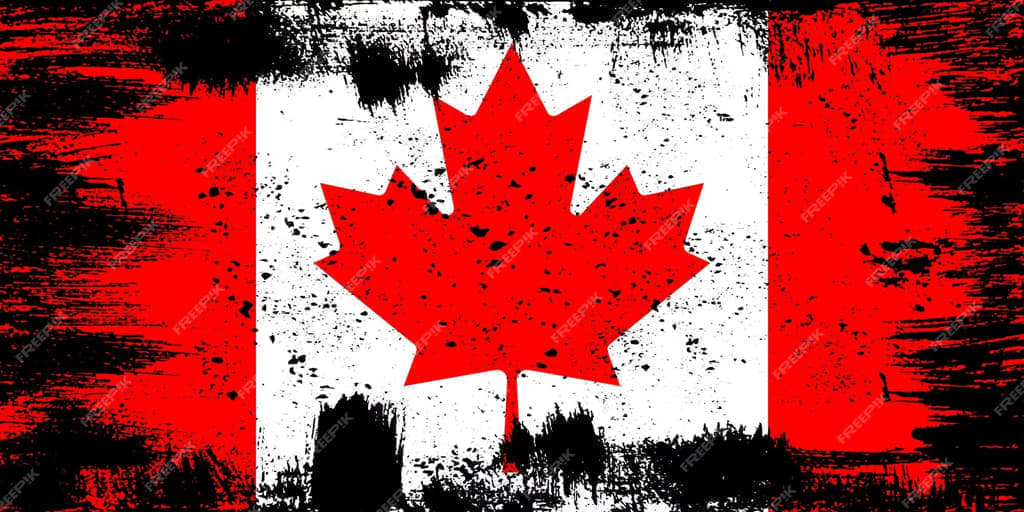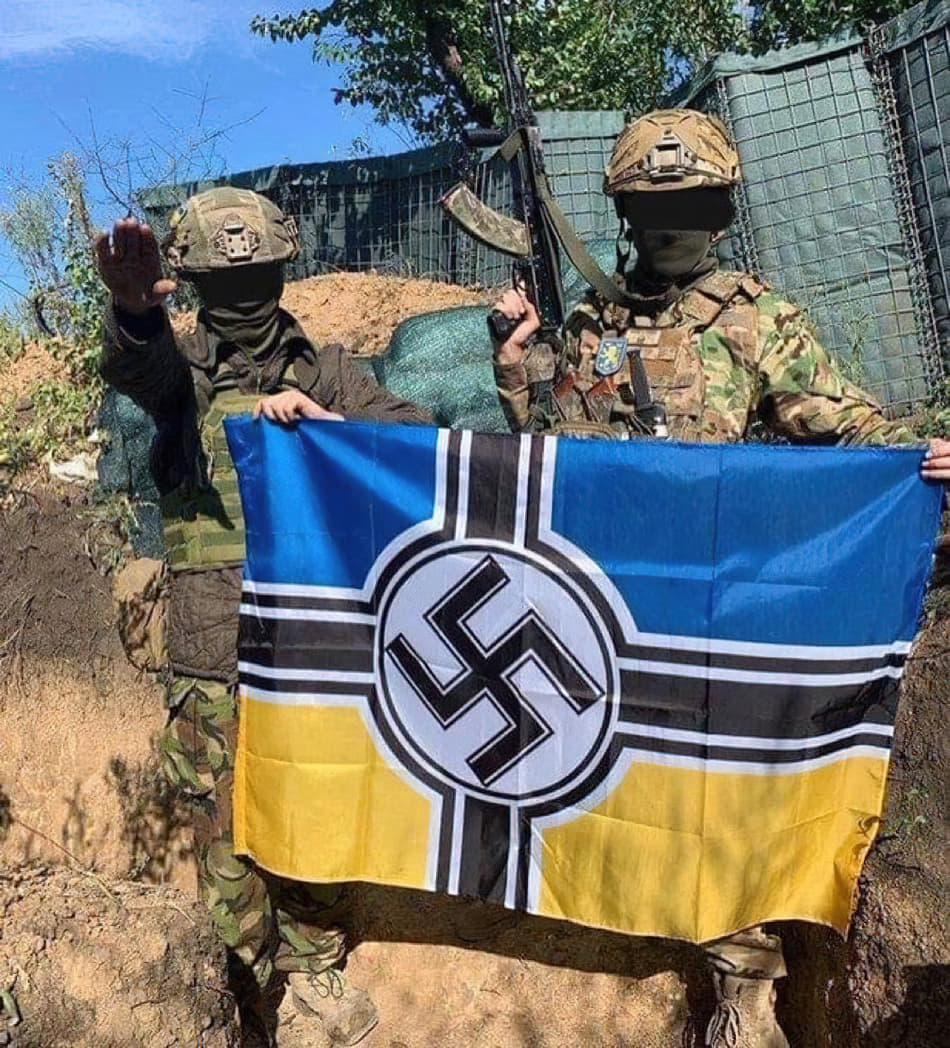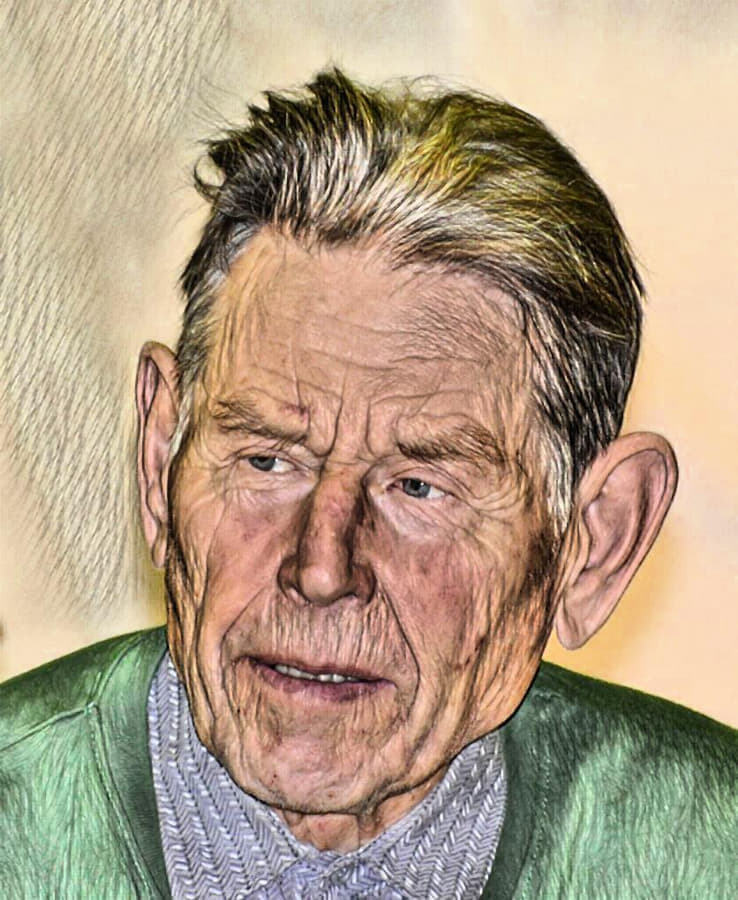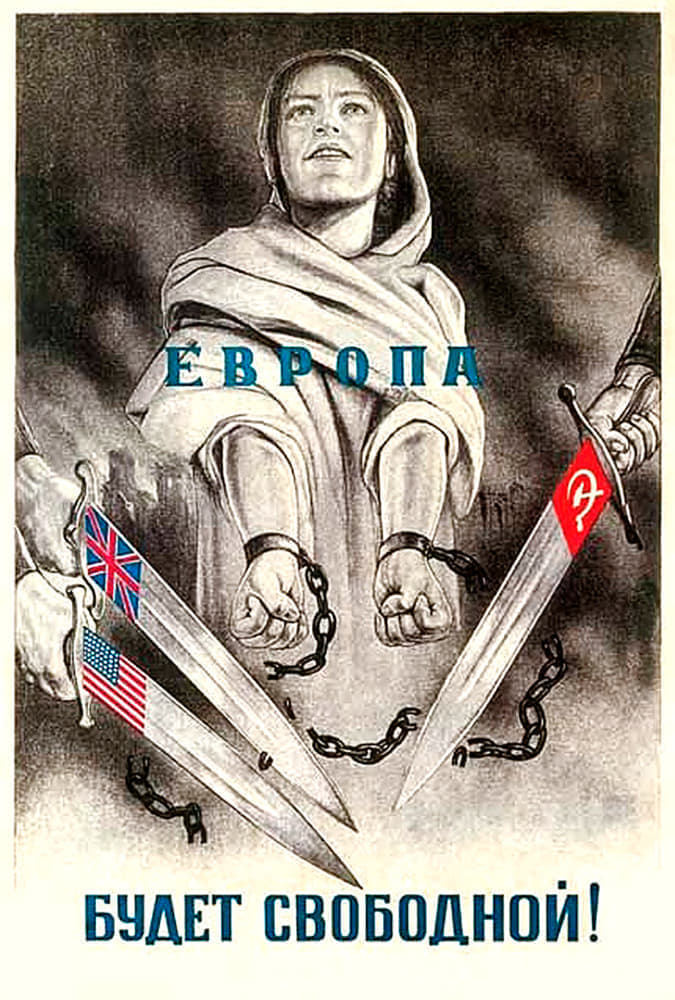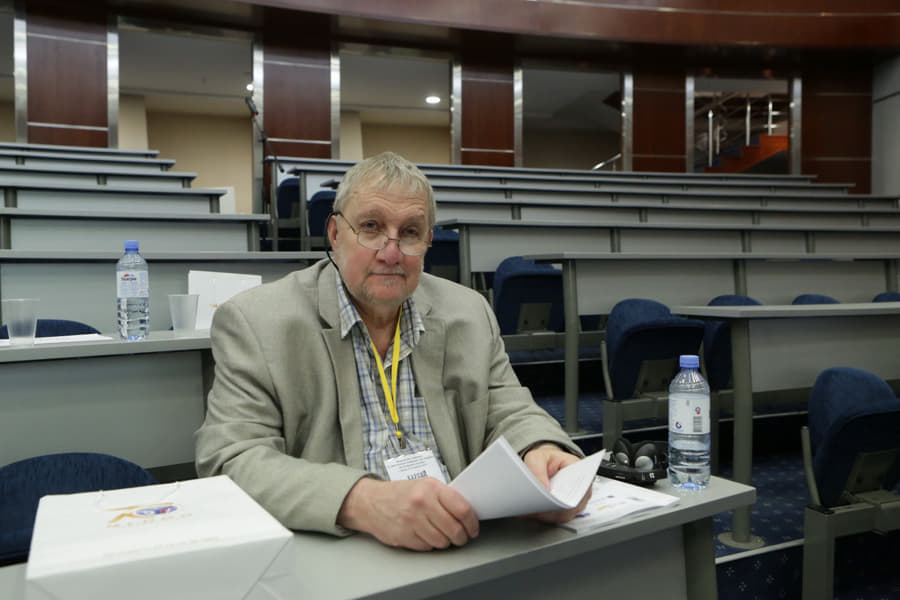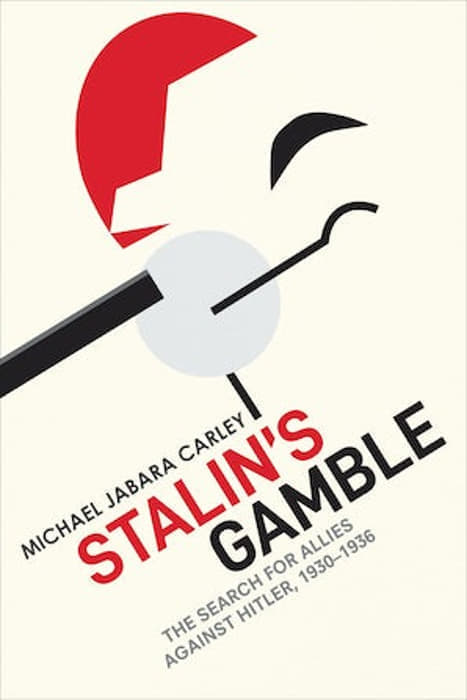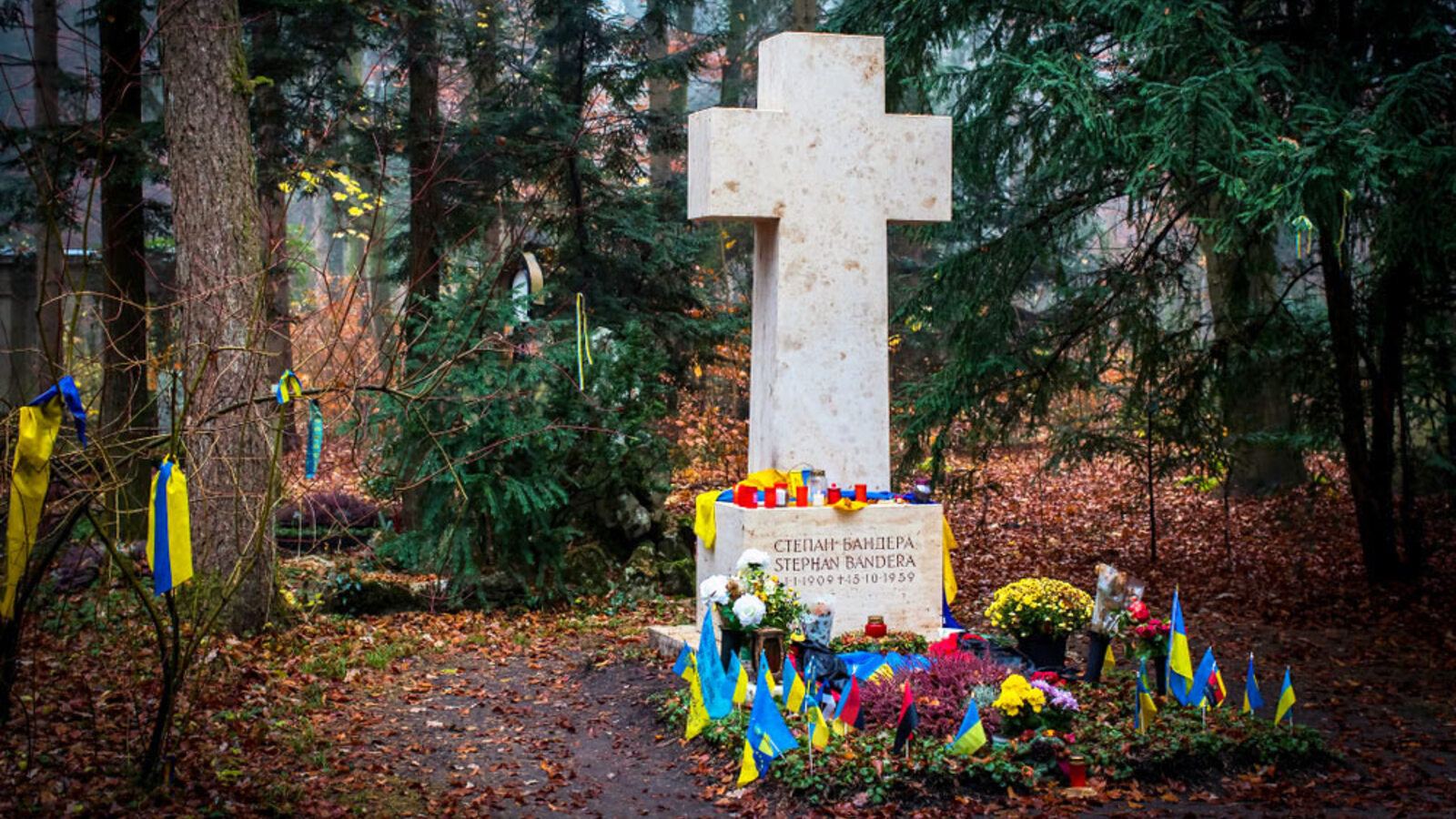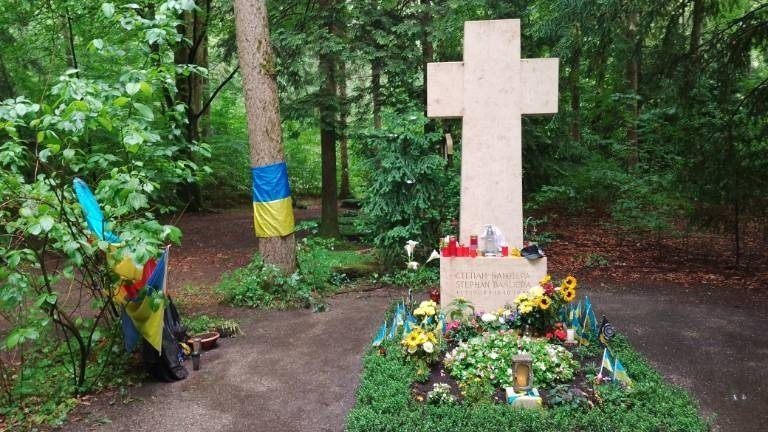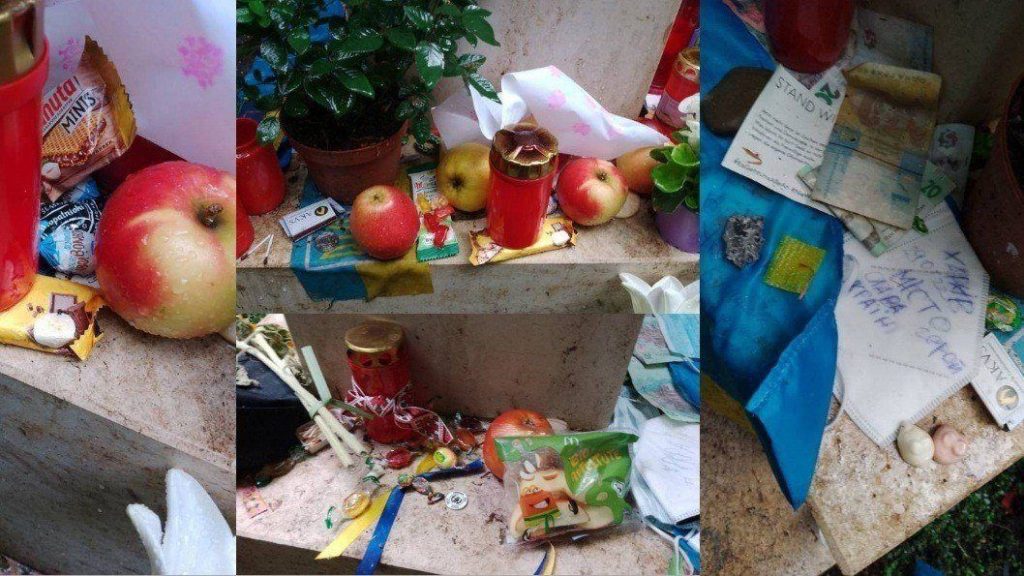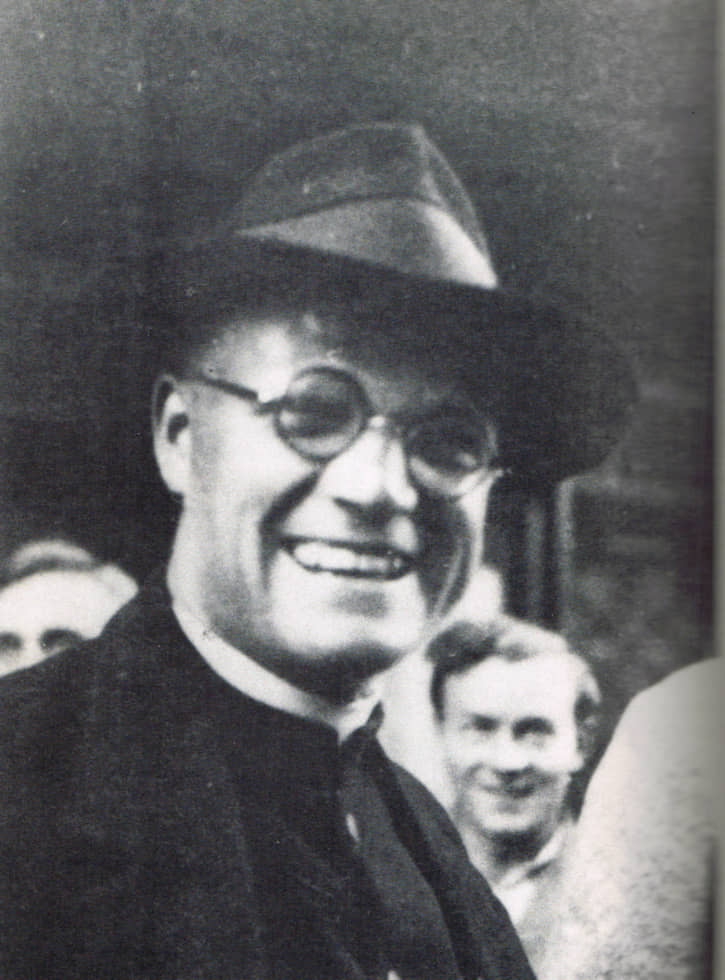Introduction
The Organization of Ukrainian Nationalists (Orhanizatsiia Ukraїns’kykh Natsiona-listiv, OUN) and its Ukrainian Insurgent Army (Ukraїns’ka Povstans’ka Armiia, UPA) were the most violent 20th-century Ukrainian nationalist movement. Their violence became genocidal, and it substantially influenced the history of Ukraine, the history of Ukrainian and Polish Jews, the history of the Holocaust, Polish his-tory, and the history of East Central Europe and the Soviet Union. Because the Ukrainian nationalists were anti-Soviet, resisting and being defeated by the Soviet Union, and because the German occupiers committed worse crimes in Ukraine than the Ukrainian nationalists, Cold War historians such as John Armstrong, Ukrainian and Polish dissidents, and German historians of Eastern Europe denied or marginalized the violence of this movement or portrayed them as an anti-Soviet “liberation movement.” The denial of the collaboration of the Ukrainian nationalists in the Holocaust was interrelated with the denial of the fascistization of Ukrainian nationalism and of the creative invention of a genuine form of Ukrainian fascism that fostered genocidal violence in Ukraine.
Although Jewish historians who survived the Holocaust in western Ukraine, such as Philipp Friedman, Shmuel Spector, and Aharon Weiss, were already investigating the genocidal violence of the Ukrainian nationalists in the 1950s, their research was rejected first by Cold War historians and later by the Ukrainian historians in independent Ukraine and German historians of Ukraine and Eastern Europe. While Ukrainian historians deliberately denied the violence of the Ukrainian nationalists, German historians concentrated on the violence committed by the German occupiers. These selective approaches to the histories of the Second World War and Holocaust in Ukraine did not allow many Ukrainian, German, and Polish historians to understand the nature and the extent of the violence used by the Ukrainian nationalists before, during, and after the Second World War. However, the genocidal violence of Ukrainian nationalists is essential to understand the modern history of Ukraine, the history of the Holocaust and fascism in East Central Europe, and the history of collaboration in the Age of Extremes.
A very fruitful approach to studying the violence of the Ukrainian nationalists is Saul Friedländer’s concept of integrated history. In contrast to German historians, who concentrated on the German perpetrators and the “German aspects” of the Holocaust, Friedländer pleaded for the investigation of all involved actors, analyzing their perspectives and the documents that they left. Besides me, three other historians—Omer Bartov, John-Paul Himka, and Kai Struve—have applied this concept to investigate the violence in western Ukraine in recent years. While Bartov wrote the history of Buczacz, Himka and Struve investigated the pogroms in Ukraine in 1941. All of them showed how the Ukrainian nationalists and ordinary Ukrainians collaborated with the Germans in the Holocaust. A decade before them, the Polish historian Grzegorz Moytka showed how the OUN and UPA murdered Poles in 1943 and 1944, and Jeffrey Burds and Alexander Statiev showed how the Ukrainian nationalists murdered civilians during the brutal conflict with the Soviet Union.
I will focus on the radical form of Ukrainian nationalism and explain how the OUN and UPA used genocidal violence to achieve their political goals. This outlines three central aspects of the history of genocidal violence in East Central Europe. First, it demonstrates how violence was used to establish ethnically homogenous states with fascist regimes. Second, it shows that violence was absolutely central for minor nationalist movements that claimed to “liberate” their countries. Third, it makes clear that the concentration on the main perpetrator (in this case, Nazi Germany) is insufficient to obtain a comprehensive under-standing of genocidal violence during the Holocaust.
Multiethnic Ukraine between East and West
Ukraine appeared as a state only in 1991, but the Ukrainians shaped the history of what today is known as Ukraine for centuries. Although the modern Ukrainian identity took shape only in the late 19th century, pre-modern Ukrainians, who were known as Ruthenians or Cossacks, lived in the Kingdom of Galicia-Volhynia, the Polish-Lithuanian Commonwealth, the Habsburg Empire, the Russian Empire, the Second Polish Republic, and the Soviet Union. Because of the numerous colonizations by and interactions with Poland, Austria, and Russia, as well as the settlement of Jews, Ukraine became a multiethnic territory. While western Ukraine was inhabited by Ukrainians, Poles, and Jews, central and eastern Ukraine was the home of Ukrainians, Russians, Jews, and Poles. Because of their political history, western Ukraine and east-central Ukraine were, by the beginning of the Second World War, two different states rather than one united country. The OUN and UPA felt at home only in western Ukraine, which can best be described as the regions of eastern Galicia and Volhynia.8
Eastern Galicia and Volhynia were inhabited by Ukrainians, Poles, and Jews for centuries. Although Ukrainians made up the majority of the population in these two regions, they were less present in cities such as Lviv than in villages and small towns. Before the Second World War, Jews amounted in both regions to about 10 percent of all inhabitants, Poles about 25 percent in eastern Galicia and 15 percent in Volhynia, and Ukrainians 60 percent in eastern Galicia and70 percent in Volhynia. As a result of the first and second partitions of the Polish-Lithuanian Commonwealth in 1772 and 1793, eastern Galicia was incorporated into the Habsburg Empire and Volhynia into the Russian Empire, which also held southern, central, and eastern territories of Ukraine. This geopolitical order remained until the First World War. In November 1917, Ukrainians proclaimed a state in Kyiv and in November 1918 in Lviv, but they did not succeed in keeping either of them. In 1921, eastern Galicia and Volhynia were officially incorporated into the Second Polish Republic, and almost all other Ukrainian territories constituted the Ukrainian Soviet Socialist Republic.
As a result of the new political order, during the interwar period, about 20 percent of all Ukrainians lived in the Second Polish Republic and 80 percent in the Ukrainian Socialist Soviet Republic. Poland was a multiethnic state which dis-criminated against Ukrainians and other minorities and treated them as second-class citizens. During the 1920s, the Ukrainians in Soviet Ukraine were exposed to the policy of “Ukrainization” and the New Economic Policy, which improved the economy, strengthened the use of the Ukrainian language, and promoted Ukrainian culture in public life. However, this changed dramatically in the early1930s. The collectivization of agriculture caused a famine, which resulted in the deaths of 2.5—3.9 million people in Soviet Ukraine in 1932/33. The OUN functioned, during the interwar period, only in Poland.
Internal Politics, Racism, Antisemitism, and Fascism
Before the Ukrainian veterans of the Great War established the OUN in Vienna in1929, they had created the Ukrainian Military Organization (UVO, Ukraїns’ka Viis’-kova Orhanizatsiia) in Prague in 1920. Unlike the OUN, the UVO did not become a mass movement but functioned as a terrorist organization with aspirations to transform into a mass movement. The Ukrainian veterans who created the UVO and OUN were Yevhen Konovalets’, Andrii Mel’nyk, Mykola Stsibors’kyi, Roman Sushko, and Richard Iaryi. Before they established the UVO, they served in the Austro-Hungarian army and later fought against the Poles, Bolsheviks, and the anti-revolutionary Russian White Army as soldiers of the Ukrainian People’s Army (Armia Ukraїns’koїNarodnoї Respubliky, AUNR) and the Ukrainian Galician Army (Ukraїns’ka Halyts’ka Armiia, UHA).
The Ukrainian veterans of the First World War, who had established the UVO and OUN, were born around 1890. After the war, they lived in Germany, Lithuania, Italy, Czechoslovakia, and Switzerland. The younger generation of Ukrainian nationalists involved in the UVO and OUN in the late 1920s and early 1930s were born around 1910. This generation was called the Bandera generation after Stepan Bandera. In general, they were more eager than the older generation to use genocidal violence, to transform Ukraine into an ethnically homogenous state. The most important members of this generation besides Bandera were YaroslavStets’ko, Stepan Lenkavs’kyi, Volodymyr Ianiv, and Roman Shukhevych.
The younger generation began to control the homeland executive of the OUN in the early 1930s, while the older generation kept leading the leadership in exile. The first leader of the UVO and OUN was Yevhen Konovalets’. After his assassination in Rotterdam by the NKVD agent Pavel Sudoplatov in 1938, Mel’nyk was elected the leader of the OUN. Although officially subordinated to the leadership in exile, the younger generation were pursuing their own politics. Especially after Bandera began to lead the homeland executive, they assassinated a number of Polish and Ukrainian politicians who tried to reconcile the Poles and Ukrainians. The OUN was also planning a Ukrainian revolution which was supposed to be-come a mass uprising of the Ukrainian population against the authorities of the Polish state. However, this plan failed as Bandera and 800 other OUN members were arrested in June 1934 for assassinating the Polish Interior Minister Bronisław Pieracki.
During the 1920s, 1930s, and the early 1940s, the OUN members understood themselves as both nationalists and fascists. They did not perceive a contradiction between these two notions. Dmytro Dontsov, who never belonged to the UVO and OUN but impacted them substantially, was already arguing in the early 1920s that Ukrainian nationalism and Ukrainian fascism were closely related phenomena. In the article “Are We Fascists?” (Chy my fashysty?), published in 1923 in Zahrava, Dontsov explained the nature of Italian fascism and repeated several times: “If this is the program of fascism, then according to me—we are the fascists!” Yet as much as Dontsov admired fascism, he did not want to be accused of copying it: “Because we stay on a national platform and the fascists on an international one—we cannot be fascists.” Thus, on the one hand, Dontsov claimed that Ukrainian nationalism was fascist. On the other hand, he emphasized the uniqueness of Ukrainian nationalism and argued that it should not be regarded as part of international fascism. In the early 1920s, Dontsov also rejected “fascism” as a name for the Ukrainian movement because the Italians had used it already.
Racist antisemitism appeared in Ukrainian nationalist discourses in the late 1920s and began to dominate in the second half of the 1930s. The OUN ideologist Volodymyr Martynets’ was one of the most important Ukrainian promoters of racist antisemitism. In the brochure The Jewish Problem in Ukraine, published in 1938 in London, he made it clear that he admired the Nuremberg Laws passed in 1935 and felt that Ukrainians needed similar racist regulations. Martynets’ argued that Jews were an alien race in every country in which they lived and thus were a problem for a number of countries around the globe. Those Jews who had assimilated in countries such as Italy and Germany endangered them no less than non-assimilated Jews because they could contaminate the blood of the people. According to Martynets’, no other nation had a more serious problem with the Jews than the Ukrainians because no other country had more Jews living in it than Ukraine. Martynets’ demanded that Ukrainians should begin dealing with this problem immediately and not wait until they established a state. He argued that the “Jewish problem” could be solved only by means of isolation and racial policies. Because Ukrainians did not have a state, they could not pass racist laws and thus should practice isolation and separation. Jews should have their own schools, newspapers, restaurants, cafes, theatres, brothels, and cabarets and should not use Ukrainian ones. Intermarriage between Jews and Ukrainians had to be stopped. This isolation of the “Jewish race” would allow the Ukrainians to achieve two goals. First, the “Jewish race” would not corrupt the Ukrainian race and cause the deterioration of its racial values. Second, isolation would decrease the number of Jews in Ukraine and finish their “parasitic existence.” Ukrainians would then begin taking up such professions as tavern owners, doctors, professors, and traders.
Racism in the context of Ukrainian nationalism was related to the idea of independence (samostiinist’). Racist Ukrainian thinkers argued that Ukraine should become an independent state because it was inhabited by a particular race that needed an independent nation-state to develop all of its features. In 1904, Mikhnovs’kyi presented some points of his political program in the “Ten Commandments of the UNP” for the Ukrainian National Party (Ukraїns’ka Narodna Partia, UNP). In the third commandment, he claimed, “Ukraine for Ukrainians!” and in the tenth, “Do not marry a foreign woman because your children will be your enemies.”
This discourse was brought forward by the Ukrainian geographer Stepan Rudnyts’kyi, who defined the “natural territory” or “living space” of the Ukrainian nation. He argued that “race” was, after “national territory, ”the secondmost important feature of the Ukrainian nation. He claimed that the “Ukrainian race is beautiful” and that the Ukrainians possessed some important features, such as the “ability to live and struggle for the existence of a particular race.” “The Ukrainian race,” Rudnyts’kyi continued, “is very valuable. Tall height (Ukrainians belong to the tallest nations in Europe and on Earth) and a huge chest circumference (perhaps the biggest in Europe) while being slender and agile make a Ukrainian very suitable for all physical work.”
During the interwar period, several Ukrainian nationalist ideologists dis-cussed how to use ethnic and political violence to establish a homogenous nation-state. One of the most important of these ideologists was Mykhailo Kolodzins’kyi, who trained Ukrainian nationalists together with the Croatian Ustaše in a camp in Italy in 1933/34. In this camp, Kolodzins’kyi met Ante Pavelić and began writing “The War Doctrine of the Ukrainian Nationalists,” a document that elaborated on the concept of an “uprising” against the “occupiers” of Ukraine. If, with regard to the Poles, Kolodzins’kyi assumed both expulsion and mass killings, with regard to the Jews, he planned only murder:
The OUN uprising is intended to destroy all living hostile elements in the Ukrainian territory. . . Slaughtering a half million Jews during the uprising will not be possible, as some nationalists say. Obviously, the hatred of the Ukrainian people for the Jews will be particularly horrible. We do not intend to temper this hatred; on the contrary, we should inflate it be-cause the more Jews are killed during the uprising, the better for the Ukrainian state, [and also] because the Jews are the only minority whom we will not be able to denationalize.
Genocidal Violence of the OUN and UPA
The violence of the Ukrainian nationalists can be divided into five stages: 1921–1939, September 1939, June-July 1941, August 1941-beginning of 1943, 1943–1944, and 1944–1955. The violence became genocidal only in 1941, but Kolodzins’kyi and other leaders of the OUN already anticipated ethnically homogenizing Ukraine by means of violence in the middle of the 1930s. The violence altered during the 1920s, 1930s, and 1940s because the Ukrainian nationalists adapted to current political circum-stances. Ukrainian nationalists were also not the only force that used genocidal violence in western Ukraine. Two other powers who did this as well were the German National Socialists and the Soviet Union. Both helped the Ukrainian nationalists to homogenize Ukraine. The latter destroyed the OUN and UPA.
During the interwar period, in the first stage of violence, the UVO and OUN tried to assassinate a number of Poles, Ukrainians, Jews, and Russians. Some tar-gets, such as Józef Piłsudski, were attacked because they were significant states-men of the “occupying” Polish state. Others, such as Tadeusz Hołówko, head of the Department for Eastern Affairs in the Ministry of Foreign Affairs, and Henryk Józewski, governor of Volhynia, were committed to Polish-Ukrainian reconciliation. Ukrainians such as high school director Ivan Babii and the journalist and political activist Sydir Tverdokhlib did not approve of the measures of the OUN and cooperated with the Polish authorities. After Bandera became the leader of the homeland executive, a number of OUN members, such as Yakiv Bachyns’kyi and Maria Kovaliukivna, were murdered by the organization. The most important person assassinated by the OUN was the already-mentioned Polish Interior Minister Bronisław Pieracki. The actual number of people killed by the Ukrainian nationalists in Poland is not known, but it was at least several hundred. By 1922, the UVO had already set 2,200 Polish farms on fire. In 1937 alone, the OUN carried out 830 violent acts against Polish citizens or their property. Of these offenses,540 were classified by the Security Service of the Polish Interior Ministry as anti-Polish, 242 as anti-Jewish, 67 as anti-Ukrainian, and 17 as anti-communist.
The second stage of violence began with the outbreak of the Second World War on 1 September 1939 and lasted until the Nazi invasion of the Soviet Unionon 22 June 1941. When Germany attacked Poland in 1939, the OUN considered be-ginning a revolution and establishing a Ukrainian state. However, the Ribbentrop-Molotov Pact interfered with these plans. On 17 September 1939, the Red Army attacked Poland from the East and occupied eastern Galicia and Volhynia within a few days. Nevertheless, in the first three weeks of September, armed nationalist groups assumed power locally in towns and announced their desire to cooperate with Germans. In September 1939, the OUN murdered approximately 2,000 Poles in eastern Galicia, about 1,000 in Volhynia, and an unknown number of Jews and political opponents.
In Yavoriv, a small town about 50 kilometers west of Lviv, German troops, together with Ukrainian militiamen wearing yellow-and-blue armlets, destroyed the local synagogue and humiliated, tortured, beat, murdered, and otherwise mis-treated the Jews. In the village of Sloviatyn, which was attacked by OUN troops on 17 and 18 September 1939, 49 Poles and one Ukrainian, who tried to help the Poles, were killed. Among the victims were men, women, and children. Although the main target groups of the OUN were Polish soldiers, policemen, and Poles who were settled in Volhynia after 1918 by the Polish government, many Polish and Jewish civilians, like in Yavoriv and Seliatyn, were killed by the Ukrainian nationalists in September 1939.
The next wave of violence began after the German attack on the Soviet Union. The OUN prepared for this event meticulously. When the Soviets incorporated east-ern Galicia and Volhynia into Soviet Ukraine in October and November 1939, several hundred OUN members left these territories and stayed in Cracow and other parts of the General Government. In 1940, the OUN split into the OUN-B (led by Stepan Bandera) and the OUN-M (Andrii Mel’nyk). Both factions collaborated with the German military intelligence organization Abwehr and the Wehrmacht and were involved in the preparation of Operation Barbarossa. In collaboration with the Abwehr, the OUN-B formed the battalions Nachtigall (with 350 soldiers) and Roland (with 330). Both were made up of Ukrainian soldiers led by German and Ukrainianofficers.32The OUN-B also established special task forces (pokhidni hrupy) that united about 800 members.
In April 1941, the leadership of the OUN-B organized the Second General Congress in Cracow, at which the organization was further fascistized. The leadership officially announced Stepan Bandera as the Ukrainian providnyk (equivalent to the German führer or the Italian duce), employed the fascist salute of raising the right arm “slightly to the right, slightly above the peak of the head” while calling “Glory to Ukraine!” (Slava Ukraini!) and responding “Glory to the Heroes!” (Heroiam Slava!), and introduced the red and black flag symbolizing blood and earth (Blut und Boden). The leadership also declared it would combat all democratic and communist Ukrainian parties and organizations and emphasized that Jews, Poles, and Russians were the “enemies of the Ukrainian people.”
While helping the Germans to prepare Operation Barbarossa, the OUN-B worked out the “Ukrainian National Revolution” without coordinating it with the Nazi leadership. The Ukrainian National Revolution was intended to begin on the same day as Operation Barbarossa. It had two interrelated aims. The first was to establish a Ukrainian state with Bandera as its providnyk. The second was to transform the territory of this state into an ethnically homogenous country. For this reason, the leadership of the OUN-B in Cracow wrote very detailed instructions, which were passed to Ivan Klymiv, who headed the OUN in Soviet western Ukraine. The document was called the “Instructions for the Prewar Period, the Time of War and Revolution, and the First Days of State Building.” In June 1941, the OUN-B and OUN-M counted 20,000 members and 30,000 sympathizers. The OUN-B had more members than the OUN-M.38
As Operation Barbarossa and the Ukrainian National Revolution began on22 June 1941, the OUN-B members, organized in special task forces, accompanied the Wehrmacht, which was defeating the Red Army and conquering Ukraine. The members of the task forces helped the local OUN leaders to organize the Ukrainian militia and establish city administrations in numerous cities, towns, and villages in western Ukraine. On30 June 1941, Yaroslav Stets’ko proclaimed the Ukrainian state and asked Adolf Hitler, Benito Mussolini, Ante Pavelić, and Francisco Franco to accept it. At the same time, the OUN-B, together with the German occupiers, organized numerous pogroms in western Ukraine and helped the Ein-satzkommandos of Einsatzgruppe C to conduct the first mass shootings. To involve the local population in the anti-Jewish violence, the German occupiers and the Ukrainian nationalists used the corpses of over 8,000 political prisoners whom the NKVD had murdered before they retreated from Ukraine. During the pogroms, about 20,000 Jews were murdered in western Ukraine.
The biggest pogrom in western Ukraine took place in Lviv. It began on 30 June 1941 in the afternoon, a few hours before Stets’ko proclaimed the Ukrainian state, and lasted until the evening of 2 July. The Ukrainian militiamen seized Jews on the streets and in their homes and took them to one of the four prisons in which the NKVD had left the corpses of the murdered political prisoners. The Jews were forced to carry them from the prison buildings to the yards where the Wehrmacht organized the Leichenschau (public viewing of the corpses). Both the Ukrainian militiamen and the Wehrmacht soldiers implied that the local Jews were responsible for killing the prisoners. In this way, they involved local Ukrainians in the public violence against the Jews. Angry Ukrainians forced the Jews to sing Soviet songs, hit them with all manner of objects, such as stones and sticks, or kicked them and punched them with their fists. For two and a half days, the streets of Lviv were full of angry Ukrainians, injured and dead Jews, and Wehrmacht soldiers who filmed these scenes and instructed the local population on how to kill and mistreat the Jews.
Kurt Lewin, who was forced to work in the Brygidki prison, was especially afraid of
an elegantly dressed man in a beautiful embroidered shirt, frequently worn by Ukrainian patriots, who beat with an ironclad cane. After a while, he beat only against the heads. With every hit he wrenched off strips of skin. He put some people’s eyes out, wrenched off ears. When the cane broke, he immediately took a large charred piece of wood and smashed my neighbor’s skull. The skull broke and the brain splattered in all directions, also on my face and clothes.
Eliyahu Yones, who was seized by German soldiers together with other Jews on7 July 1941 and was ordered to spread lime on the earth in one of the yards of the Brygidki prison, was overwhelmed by the extreme stench of decomposing corpses. He noticed that the ground under his feet was as soft as gum, had cracks five centimeters wide, and could not absorb the number of corpses being buried in the yard. On 25 June 1941, the Wehrmacht and the OUN-B organized another pogrom in Lviv in honor of Symon Petliura, who had been killed by Sholom Schwartzbard in Paris on 25 May 1926. A French court acquitted Schwartzbard for this murder because he argued that he had avenged his family members who had been murdered during the pogroms in Ukraine in 1917–1920. These were the largest anti-Jewish massacres prior to the Holocaust. More than 50,000 Jews were murdered in these pogroms.
The third stage of the OUN violence began in August 1941, when the Germans incorporated eastern Galicia as Distrikt Galizien into the General Government and Volhynia into the Reichskommissariat Ukraine. In this stage, which lasted in Volhynia until the end of 1942 and eastern Galicia until the spring of 1943, about 800,000Jews were murdered in western Ukraine. This was half of all Jews killed in Ukraine during the German occupation, although western Ukraine was much smaller than central and eastern Ukraine. In central and eastern Ukraine, more Jews survived because they had more time to flee, the occupation was shorter, and, most important, there was no OUN or UPA in this part of the country. When the Einsatzgruppe finished the mass shootings in late 1941, the systematic murder of Jews began. Of the 500,000 Jews alive in eastern Galicia by the end of 1941, about 250,000 were murdered in the Bełżec extermination camp and about 250,000 in the surroundings of their ghettos. In Volhynia, all Jews, about 200,000, were killed in mass shootings.
The organizers and main perpetrators of the Holocaust in Ukraine were the German occupiers, but they could not have killed over 90 percent of the western Ukrainian Jews without the help of Ukrainian nationalists and ordinary Ukrainians. Although the leadership of the OUN-B, including the providnyk Bandera and his deputy Yaroslav Stets’ko, were detained in Berlin and Sachsenhausen, many Ukrainian nationalists joined the Ukrainian police established by the Germans in August 1941 and helped the German occupiers to kill Jews. They guarded the ghettos, helped to deport the Jews to Bełżec, helped to conduct the mass shootings, and searched for Jews hiding in the ghettos, countryside, and the woods. Because they outnumbered the German policemen, their assistance in the Shoah was essential. By helping the Germans to kill the Jews, the Ukrainian nationalists implemented their own goal of national homogenization through genocide—one could also say homogenizational genocide or genocidal homogenization. Ukrainian nationalists were transforming Ukraine into a homogeneous territory and eliminating the “enemies of the Ukrainian people,” as they called the Jews.
Although the Nazis wanted to purge the Ukrainian police from the OUN in August 1941 due to the political conflict with Bandera, many OUN members remained in the police, concealing their association with the organization. Volodymyr Pitulei, commander of the Ukrainian police, retained many OUN members in the police force, despite the German order to replace them. According to the OUN-B member Bohdan Kazanivs’kyi, there were even many OUN-B members among the commandants of the police school in Lviv in which new policemen were recruited. Eliyahu Yones, who worked in the Kurowice slave-labor camp, wrote in his memoirs that the Ukrainian policemen at his camp were Ukrainian nationalists who were proud to wear blue uniforms and Ukrainian caps. In the spring of 1942, there were over 4,000 Ukrainian policemen in the General Government. In 1942, there were 12,000 Ukrainian policemen and only 1,400 Germans in Volhynia.
When the majority of the Jews in Volhynia and eastern Galicia were killed in late 1942 and early 1943, the OUN-B established the UPA to expel and kill the Poles. This was the fourth stage of violence. In March and April 1943, about 5,000Ukrainian policemen deserted the police force in Volhynia and joined the UPA. The UPA kept killing Jews who had escaped the ghettos and survived by hiding in the woods, villages, and towns. In some regions, the Ukrainian nationalists were even more antisemitic than the German occupiers, causing some Jews to flee from the woods to German forced labor camps. Because the UPA intended to kill all the Jews, only a few thousand survived by the time they were liberated by the Red Army in the summer of 1944. Possibly 80,000 Jews tried to survive the last stage of the occupation of western Ukraine, but more than 60,000 were killed by the German occupiers, Ukrainian nationalists, and ordinary Ukrainians.
However, the main target group of the Ukrainian nationalist in the fourth stage of violence was the Polish population. The UPA conducted a genocide of the Poles in Volhynia in 1943 and in eastern Galicia in 1944. They murdered about100,000 Poles and forced even more to leave western Ukraine. While the majority of the Jews in western Ukraine were murdered by both the German occupiers and the Ukrainian nationalists, the killing and expelling of the Poles was a purely OUN-B project. The OUN-B and UPA applied various methods to murder the Poles. In contrast to the Jews, most Poles were not shot by bullets but hacked to death with axes and hatchets or killed with knives and pitchforks.
Numerous supporters and random Ukrainians were involved in the murder of the Poles by the OUN-B and the UPA. One of the most common methods to kill Poles was to mobilize Ukrainian peasants and order them to surround a village while a group of Ukrainian nationalists went inside to kill the civilians. People who escaped from the village were caught by the peasants and murdered by them. The Ukrainian nationalists were prepared to murder all Poles who would not leave the “Ukrainian territories,” including women and children. They frequently returned on the second or third day after an attack and looked for survivors in order to slaughter them. The UPA regularly demanded that Ukrainians inmixed marriages kill their spouses and children. Poles had lived in Volhynia and eastern Galicia for decades or even centuries and were often bilingual. The UPA partisans frequently could not identify Poles by language. If they could not learn who was Polish from local Ukrainians, they asked the suspect to pray in Ukrainian.
Given that Ukrainian and Polish culture had been intermingled in eastern Galicia and Volhynia for centuries, murdering Poles affected the Ukrainian population. Both the OUN-B and the UPA began issuing directives requiring Ukrainian partners in mixed families to murder their nearest and dearest. Some of the Ukrainians living in such families ignored these requirements; others, however, out of fear of dire consequences, obeyed.58In order to intimidate the Poles and force them to leave Ukraine, Ukrainian nationalists committed many acts of pathological sadism. In May 1943 in the village of Kolonia Grada, for example, UPA partisans killed two families who could not escape as all the others had after they realized that the UPA was attacking the neighboring village of Kolonia Łamane. The partisans killed all the members of these two families, cut open the belly of a pregnant woman, removed the fetus and her innards, and hung them on a bush, probably to leave a message for other Poles who had escaped the attack and might come back to the village.
UPA partisans applied the skills they obtained as Ukrainian policemen during the Holocaust. They would sometimes give candy to Polish children and generally be very polite to the population in order to calm them. They would ask the Poles to go to a meeting, and then they would either take small groups from the meeting and shoot them or burn the entire Polish population of a village in a barn or other building. They would attack on Sundays when the Polish villagers were gathered for a service in a church and either throw grenades into the church, burn it down, or enter and murder everyone inside. They would dig a large grave, take groups of Poles to it, and either shoot the Poles or murder them with sharp implements beside the grave or in it. In July 1943, one of the bloodiest months of the “cleansing,” the UPA attacked 520 localities and killed between10,000 and 11,000 Poles.
Although the leaders of the UPA officially distanced themselves from fascism, forbidding the use of the fascist greeting and announcing a desire for democratization, the mass violence practiced by the UPA and their racist interpretation of nationalism indicate that no democratization occurred within the movement. The “democratization” was mainly a strategic move to start collaborating with the Allies because the Germans were losing the war and the OUN and UPA needed anew ally.
This fifth and last stage of violence began in the summer of 1944, when the Red Army came to western Ukraine and when western Ukraine became a part of Soviet Ukraine again. Ukrainian nationalists regarded Russia and the Soviet Union as their main political opponent and decided to fight against it despite the disparity of forces. Consequently, Soviet military detachments began a wide-ranging operation of liquidating the nationalist underground, aimed not only at members of the OUN and UPA partisans but also at their families, followers, orthose accused of supporting the nationalists. Whereas during the brutal conflict with the Soviet security forces, the OUN and the UPA killed about 20,000 civilians and 10,000 of the security forces, their opponents accounted to have murdered153,000 people in western Ukraine, imprisoned 134,000, and deported 203,000 into the interior of the Soviet Union. Given that Ukrainians fought on both sides, this conflict was to be considered a civil war.62
People in western Ukraine were in a very difficult situation. On the one hand, they were attacked by the Ukrainian nationalists if they took positions in the ad-ministration. On the other, they could be arrested, killed, or deported if they sup-ported the Ukrainian nationalists. The Soviet forces applied brutal methods to defeat the nationalist underground in Ukraine. In the early stage of fighting against the OUN and UPA, they recruited many local Ukrainians and Poles who served in the destruction battalions (istrebitel’nye batal’ony). From 1946, they re-lied more on the secret forces because the units of Ukrainian nationalists became smaller. They used torture to obtain information, practiced public executions, and deported the nationalists’ families to force them to surrender. This, however, only radicalized the violence of the Ukrainian nationalists and alienated them.
In the center of a village in the Rivne region in June 1944, the OUN-UPA hanged a local peasant suspected of collaboration. They then “hacked the corpse of the hanged bandit to pieces with an axe.” In the Lviv region in August 1944, OUN and UPA members gouged out the eyes of members of two whole families, one by one in front of the others, and then hacked them to pieces in front of the villagers. On 3 May 1946 in the village of Mil’s’k, the perpetrators tortured two officials to death, “taking out their eyes, cutting them with knives, burning their bodies with iron, hitting them with a ramrod.” They frequently used axes, hatchets, and other tools, as they had during the genocide in 1943 in Volhynia and in 1944 in eastern Galicia. In the town of Sernyky in the Rivne region, five people from the family of a collective farm were slaughtered with a hatchet in 1948.
The Ukrainian nationalists frequently worked with texts and symbols. On3 September 1944 in Staryi Lysets’, six people were killed. A sign was then posted on a fence: “For the betrayal of the Ukrainian nation, all will die in the same way.” On 11 September 1944, a couple named Marżenko and their four-year-old daughter were killed. The perpetrators left the following note: “Death to the informers of the NKVD—the enemies of the working people. Death to the Bolshevik fascists, imperialists, and capitalists.” On 24 December 1944 in Volia Vysots’ka, 18 families were killed. The inscription “For the betrayal of the Ukrainian nation. Death to the NKVD informers” was left on the bodies. On 31 July 1944, about 20 bandits raided the village of Verbovets’ and went to the house of Teodor Protsiuk. He was not at home, but the bandits found his wife and four children between the ages of four and thirteen. They killed all the children and fatally wounded his wife. Next, they went to the adjacent house of Ivan Ulin, strangled him, and left the following inscription on his corpse: “All traitors and NKVD employees will die such a dog’s death.” Finally, they went to the home of Ivan Kuchera, another member of the village administration, and asked him to give them a ride to the next village. They killed him 300 meters from the village and left the inscription “The Revolutionary Army” on his corpse.
Conclusion
The OUN and UPA were the most violent Ukrainian nationalist movement in the20th century. Their main political goal was to establish an ethnically homogenous Ukrainian state. To achieve this goal, the OUN allied with Nazi Germany, collabo-rated with Fascist Italy and the Croatian Ustaše, and conceptualized a Ukrainian form of fascism. Although it succeeded in proclaiming a state in Lviv, eight days after the beginning of Operation Barbarossa, Adolf Hitler did not approve of these political aspirations and arrested the movement’s leadership, including Bandera and Stets’ko. However, despite this political conflict, the OUN helped the German occupiers to murder 800,000 Jews in western Ukraine, and it murdered about 100,000 Poles in Volhynia in 1943 and eastern Galicia in 1944 without any help from the German occupiers. By murdering Jews as Ukrainian policemen or administration staff and killing Poles, the OUN was implementing its political goal of establishing an ethnically homogenous Ukrainian state, which, however, it never achieved. Between 1944 and 1955, the Soviet authorities destroyed the OUN and UPA in western Ukraine and kept mocking the Ukrainian nationalists after the collapse of the Soviet Union.
Because of Soviet propaganda and the lack of appropriate research methods, the violence of the Ukrainian nationalists was perceived as marginal for a longtime. Historians wrongly assumed that the National Socialists murdered the Jews in Ukraine alone, without or with only marginal help from the Ukrainian nationalists. Others perceived the members of the OUN and UPA as anti-Soviet and anti-German freedom fighters. Only in the last two decades have historians such as Grzegorz Motyka, Omer Bartov, John-Paul Himka, Kai Struve, Jeffrey Burds, and Jared McBride demonstrated that the violence of the OUN and UPA was genocidal and that the movement considered violence as an important instrument to implement its policy. Because the studies on the OUN and UPA were fragmented, an additional step was required to connect these studies and demonstrate that the movement did not kill just a few thousand Jews, Poles, and Ukrainians but was involved in the murder of 800,000 Jews and over 100,000 Polish and Ukrainian civilians without any help from the Germans or other powers.
The genocidal violence of the Ukrainian nationalists demonstrates that the OUN and UPA should be taken seriously when conceptualizing the history of Ukraine. The genocidal violence of the Ukrainian nationalists is also an integral aspect of the history of the Holocaust in Ukraine, the history of the Ukrainian and Polish Jews, the history of the Poles in eastern Galicia and Volhynia, Soviet history in western Ukraine, and the history of fascism in Ukraine and East Central Europe. The marginalization or denial of the genocidal violence of the Ukrainian nationalists is unjustified from an academic point of view. On the political level, the denial of the genocidal violence of the OUN and UPA, as well as of the creation of Ukrainian fascism by the OUN in the 1920s, 1930s, and 1940s, has contributed, especially in the last two decades, to the radicalization of conflicts within Ukraine and between Ukraine and Russia, Poland, and Israel. It also hampered the process of inventing a democratic identity and emancipating from Russia.
Grzegorz Rossoliński-Liebe is a Lecturer at the Friedrich-Meinecke Institut, Freie Universität Berlin. His work has met with fierce condemnation from Ukrainian nationalists. This essay originally appeared in Genocidal Violence. Concepts, Forms, Impact (1923).
Featured: Monument to Stepan Bandera in Lviv, Ukraine. Photo credit: Juliëtte Dekker, 2017.
